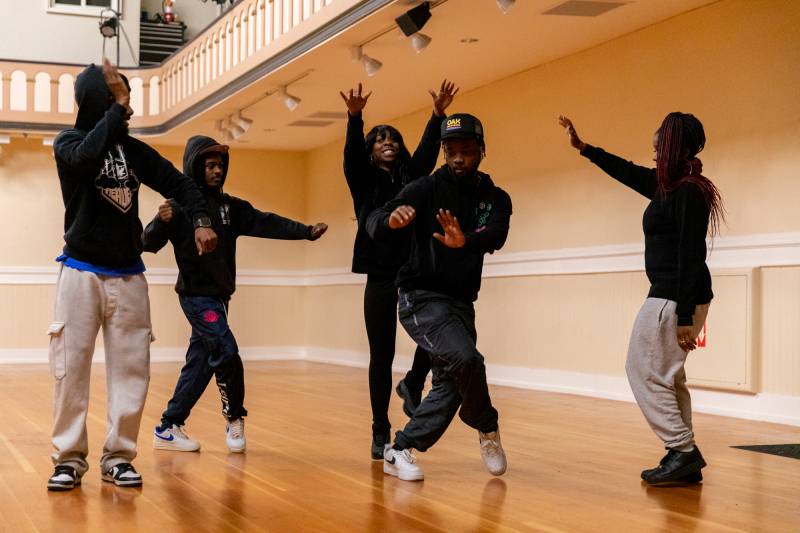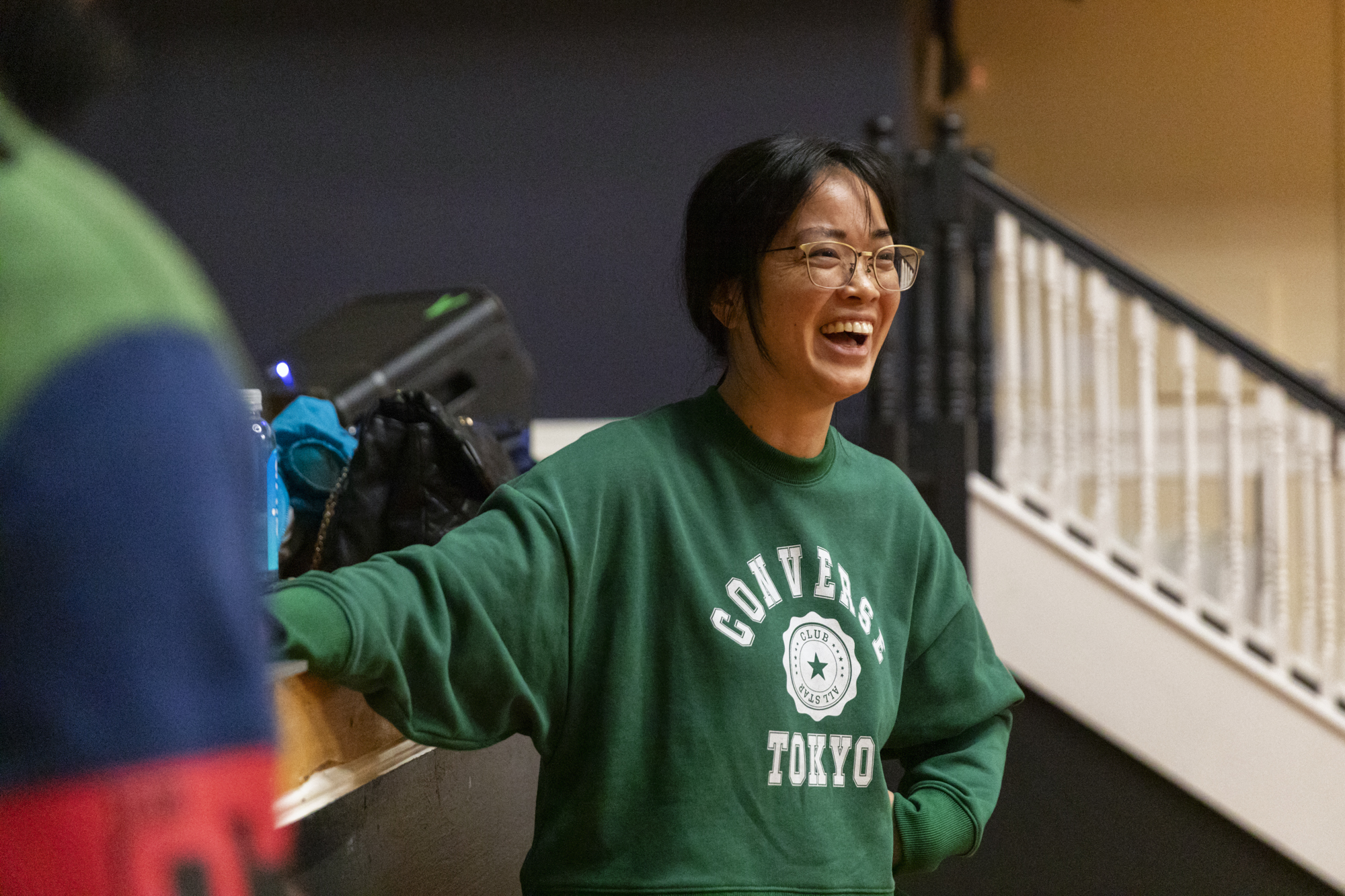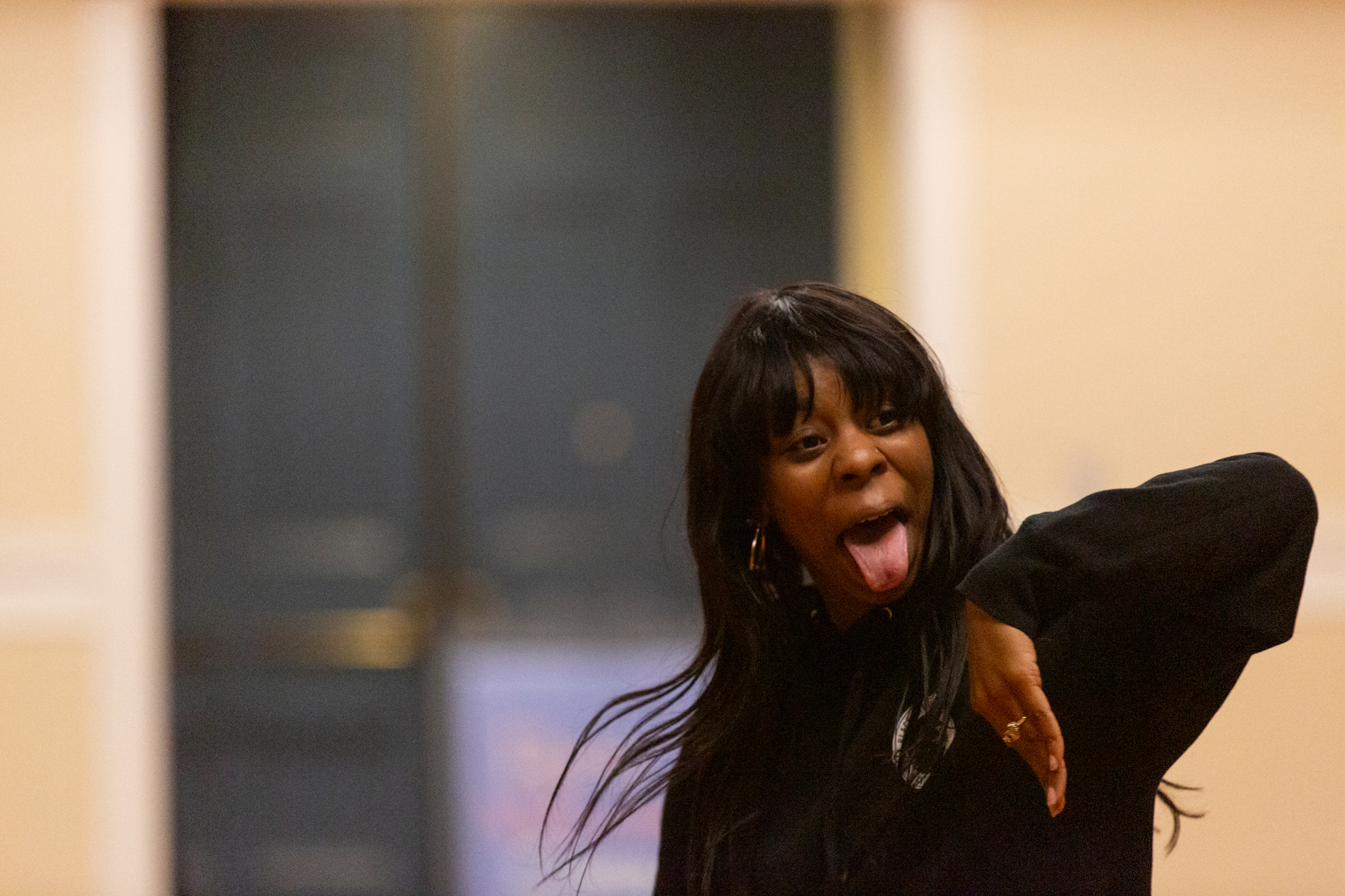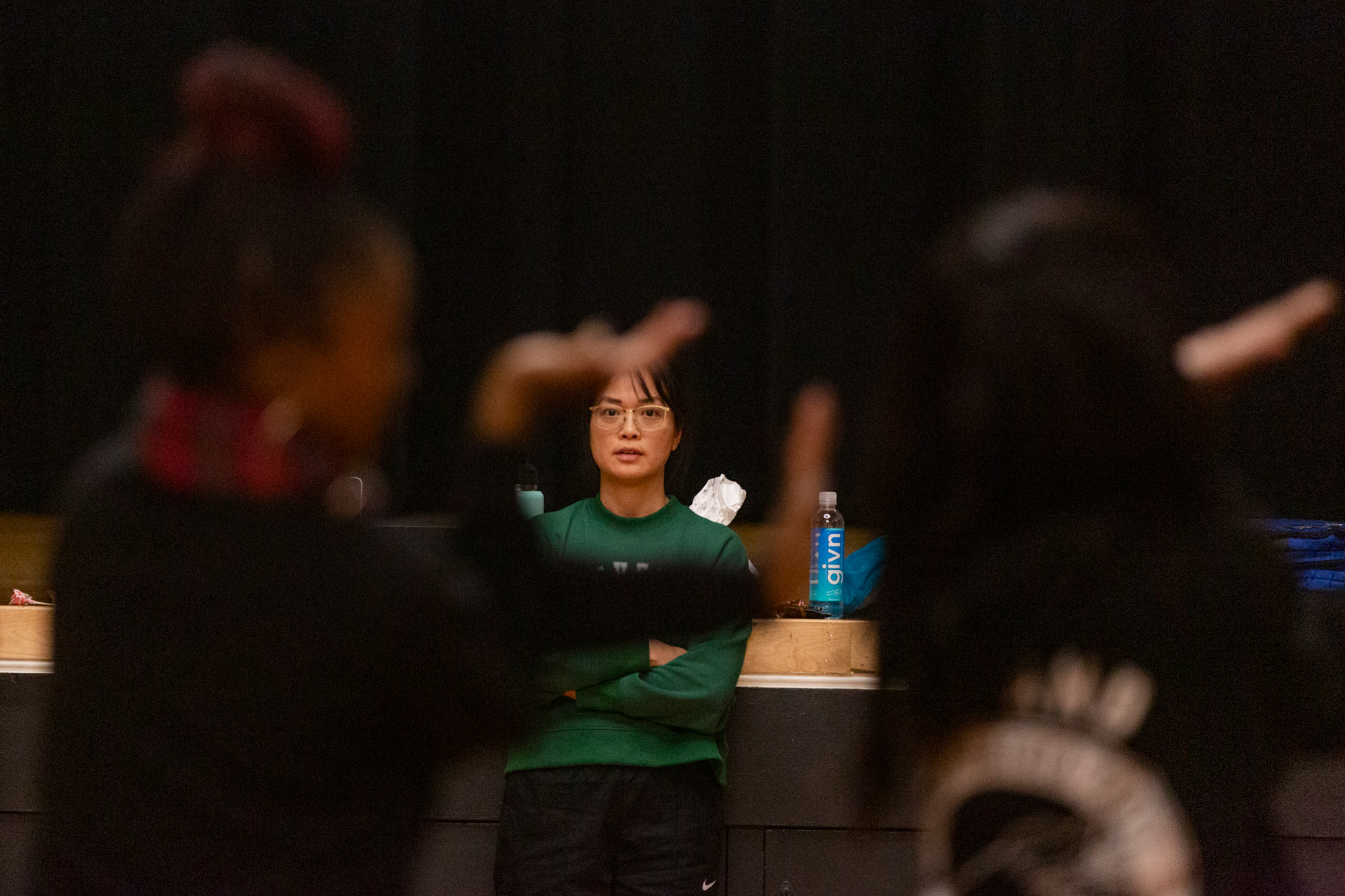In a 2016 music video for Kaytranada’s “Lite Spots” a robot follows its creator around Los Angeles, watching and mimicking dance moves. But there’s one dance style (which looks a lot like the Oakland-born turfing) that the robot is unable to fully capture, resulting in an error message, an inability for the AI to compute. In her new dance theater performance Mud Water IV, Nov. 18 and 19 at Dance Mission Theater, Bay Area artist and choreographer My-Linh Le proposes a futuristic scenario not so dissimilar from that music video: what might it look like to teach an AI about the cultural roots and importance of turfing?
In an AI-Driven Future, Turf Dancers Share the Meaning of Their Movements

Le, the founder and director of Mud Water Theatre, is best known for bringing turfing to the stage, collaboratively creating productions with groups of dancers — including a combination of turfing and ballet. She pivoted to film at the height of the pandemic, creating Mud Water, a half-hour short that premiered at the 2022 San Francisco International Film Festival as a hybrid narrative and dance film.
While preparing for this latest iteration of the project, her cast struggled to define turfing, so Le provided ChatGPT’s take on the dance form (originally known as fuckin’ with it). In addition to a description of fluid, graceful, abrupt and robotic movements, the chatbot offered that turfing “means to engage with or manipulate something in a casual or experimental manner, often with a sense of nonchalance or indifference. It can also imply a willingness to take risks or be daring.” The dancers agreed.

From ‘going hyphy to going viral’
Le thinks of Mud Water IV as an exercise in autoethnography, a method of reflecting on the dancers’ observations of their own culture or subculture. Since the emergence of turfing in the early 2000s, shifts in musical styles have inevitably changed the way people dance to that music. Le is especially interested in the role virality plays within the attention economy; she’s trying to understand the trajectory of Bay Area dance culture from “going hyphy to going viral.” Fittingly, part of the premise of Mud Water IV, set in the year 2032, is the existence of an AI called DanceGPT that has gorged itself on social media dance trends.
“You basically have to change the integrity of the thing you love or the stance that you want to represent, if you want it to spread,” Le says of dance in today’s social media landscape. “But in the end, what are you spreading? Many of the turfers in our cast have been discussing the changes and shifts they’re seeing.”
The cast is made up of some of the most extraordinary dancers in the Bay Area turfing community, including Alante “Tae-Ninja” Hall, Arthur “Dopeyfresh” Gardner, Gary “Icecold3000” Morgan, Jarell “Skeeter” Boyd, Charlie, Michael “Noname” Chicago II, Shaka Perdue and Telice Summerfield. Le asked her cast questions about their experiences in the turfing community, becoming an intermediary for their reflections as they prepared for the show over the past year. She considered how their perceptions, their participation in the movement, might possibly feed into DanceGPT — and how algorithms, in turn, could change or transform the culture.

At Dance Mission Theater, the final production includes turfing, storytelling and motion graphics projected behind the dancers on stage. The entire structure of the show is documentary-esque, a purposeful response to the rapid speed of data and image-consumption by both social media and machine-learning platforms. Audiences watch as the dancers attempt to provide — ultimately — a definition of turfing.
As I sat through a rehearsal, every movement changed slightly with every repetition, which was refreshing and slightly unnerving — a particular glide or articulation was specific to each moment. Similarly, the sheer beauty of turfing comes from the inability to contain it. Could an AI capture and document, with precision, the history and cultural impact of turfing? The short answer is: never.
‘It takes the whole community’
If technology cannot hold a dance movement, maybe a dancer’s body can serve as a type of archive? The body remembers — but it also forgets. It inevitably evolves and ages, which might not make it the most reliable entity for storing memories and movements. As dancers and dance forms evolve, movements become second nature or are omitted, especially if a gesture doesn’t feel like it has a soul to it.

Le came up in the popping scene of San José, but it was a creative environment, she says, of a specific time, place and people. “You can put on the clothing and the attire. You can play the music of the ’80s or ’90s, but essentially you can’t recreate it,” she says. “You can’t reenact it because it takes the whole community for a culture to exist. When we talk about the archive being the body, yes, it is the body. But it is also the bodies — the many, within the community.”
Turfing is full of intricate finger, hand and arm gesticulations. Its dancers seem to float across concrete, creating a genre of movement in a class of its own. The culture makes space for celebration alongside expressions of mourning, trauma and loss, all while dancers battle to take up room on the floor. What started at house parties and in the streets now also exists in competitions and theatrical performances, and yet it is a movement that resists label or definition. Mud Water IV attempts to grasp its meaning: the dance form’s irresistibility lies in its insistence to play as much as to rouse.
What appeals to Le, and what the upcoming performance captures, is turfing’s profoundly rooted, endlessly iterative style. “You’re going to get every texture,” she says. “You’re going to get smooth, fluid, liquid. You’re going to get the frenetic. You’re going to get the deeply thoughtful movement as well as happy. You enter and go in any direction.
“There are no rules when it comes to turfing or fuck with it,” Le adds. “It comes down to whether or not you share the same values, same kind of history, and similar experiences that you end up speaking in the same language.”

‘Mud Water IV’ takes place Nov. 18 and 19 at Dance Mission Theater (3316 24th St.). Click here for tickets and more information.

